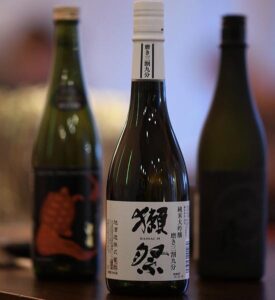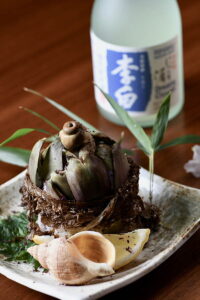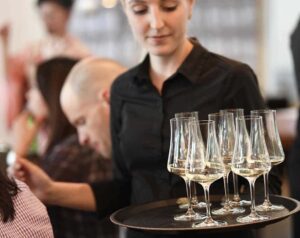Futsūshu
Japanese sake can have the highest craft requirements for production and raw ingredients. To understand the quality classes of sake and its flavor orientation, knowledge of the different quality classes of Japanese sake a great help. In addition to the six important premium classes of sake, there is also the Futsū class.shu.
What is Futsūshu sake?
Japanese sakethat is not classified as Tokutei Meishōshu is called "Futsūshu" (普通酒) or "Ippanshu" in Japan. "Futsū" means "normal" and it is not premium sake. In German, it could also be well called table sake or standard sake.
Conversely, this means that if you don't see any of the premium designations (so always contains the words Honjōzō, Junmai, Ginjō or Daiginjō) on a sake bottle or in a sake menu in a restaurant, then it is usually automatically Futsūshu, table sake.
So, at the Japanese restaurant of your choice, pay attention to whether you get only Futsūshu or if you also have the choice from different premium sake.
However, this does not mean that every Futsūshu is automatically only bad or inferior.
What distinguishes a Futsūshu?
Futsūshu is not subject to any special regulations. It is often made from "edible rice" instead of sake rice. Futsūshu contains a lot of added distilled alcohol. Some varieties also contain sugar, colorings and other additives.
Historical development of Futsūshu
Futsūshu is not subject to any special regulations. It is often made from "edible rice" instead of sake rice. Futsūshu contains a lot of added distilled alcohol. Some varieties also contain sugar, colorings and other additives.
In Japan, during and after the war, large amounts of brewed alcohol were added to sake to make as much sake as possible with as little rice as possible.
At that time Junmai sake added twice the amount of low-grade alcohol and adjusted the taste with sugar, acidifiers and chemical seasonings. This was called "Sanzōshu" (三増酒, German: verdreifachter Sake). The sake made in this way was of course of very low quality, but it was accepted at a time when rice was very scarce.
However, even during the period of rapid economic growth, when there were no longer difficulties in obtaining rice, some sake breweries continued to produce this type of sake with an emphasis on profit.
Nowadays, due to changes in the law, it is not even possible to produce "tripled" sake. But because brewing alcohol is added to Futsūshu, many Japanese still categorically consider Futsūshu bad.
Taste profile of sake category Futsūshu
Of course, you also can't expect Futsūshu to taste as high quality as premium sake with wonderful aromas and complex flavor profile.
However, there are many sake breweries that strive to offer consumers good sake at an affordable price. Some breweries even dare to offer high quality sake that meets the Ginjō criteria fulfilled, as Futsūshu for sale. Unfortunately, the selection of Futsūshu outside Japan is not large, so the chances of finding such treasures may be small.
"Table sake" with 60% market share in Japan
In any case, Futsūshu is something like table wine for Europeans. It still accounts for about 60 % of the Japanese sake market at present (as of about 2020, with a declining trend over the years). When you drink Futsūshu, you don't have to worry too much about the temperature range or what foods you can pair it with.
Some Japanese prefer to drink Futsūshu for everyday use and premium sake for special occasions.
Sharing pleasure in Japanese
SUSHIYA is passionate about Japanese cuisine and culture. In our restaurant sansaro you can encounter the fascinating Japanese cuisine or have it delivered to your home. On our homepage, Facebook and Instragram we always give insights into news and interesting topics.

Sake Tasting Event on November 1, 2018 with Yoshiko Ueno-Müller
Our tasting events have enjoyed great popularity for a good two years now - we combine fine Japanese drinks with exclusive appetizers. At

Sake Tasting Event on May 5, 2019 at Restaurant sansaro
Our kitchen team is already busy preparing for the Sake Tasting at the restaurant sansaro in Munich on May 5, 2019

Review Sake Tasting with Food Pairing on May 1, 2018
Review of the sake tasting on May 1, 2018 at the sushi restaurant sansaro in Munich - where you can get to know Japanese sake and combine it with the right food.



